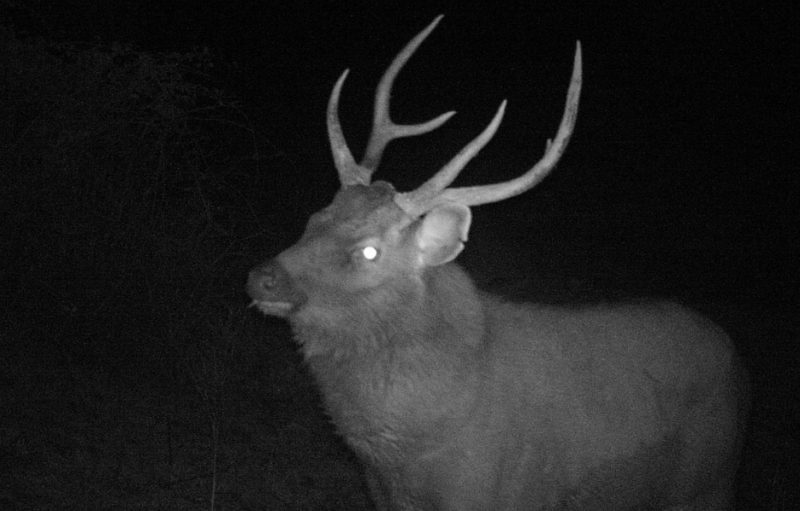PARK WATCH December 2019 |
Our NatureWatch Coordinator Sera Blair introduces us to our native neighbours.
This summer our NatureWatch program’s new project ‘Backyard Bandicoots’ will begin in residential neighbourhoods adjacent to the Royal Botanic Gardens Cranbourne (RBGC). We are working with the local community, Friends of the Bandicoot, and the RBGC to monitor the local population of endangered Southern Brown Bandicoots on public land and in private backyards!
Southern Brown Bandicoots (Isoodon obesulus obesulus) are medium-sized marsupials that can be mistaken for possums or rats in urban areas. They have lost a lot of their natural habitat in Victoria, but they are adaptable little creatures that can survive in highly modified landscapes, including suburban backyards.
They are actually quite nice neighbours to have. They won’t eat the garden, though they may nibble on pet food. They forage by digging small holes, which they may do in lawns, but this helps increase nutrient cycling – so a win-win!
A key population of Southern Brown Bandicoots live at the RBGC, which is fenced to reduce predation from foxes and cats. Rapid residential development has replaced farmland with a maze of new houses, roads and fences that disrupt the ability of bandicoots to disperse into new habitat areas beyond the botanic gardens. As a result, homeowners in the area are now effectively habitat managers for this endangered species. This provides us with an interesting opportunity to work with this community to monitor the local bandicoot population and to increase awareness and acceptance of bandicoots as neighbours.
New residential developments in this area were approved under the Victorian Government’s Melbourne Strategic Assessment (MSA) which considered the impact of the developments on remaining bandicoot populations and habitat. The MSA’s Southern Brown Bandicoot program endorses the creation of bandicoot-friendly suburbs, improving scientific understanding of the bandicoots, creating a habitat connectivity network and to development of a genetic rescue strategy for the species. It released a draft Sub-regional Species Strategy for the Southern Brown Bandicoot for consultation in 2011. The strategy championed the retention of bandicoot habitat corridors as a key conservation management action. The Victorian National Parks Association contributed to the development of this strategy, highlighting the need to protect threatened species habitat in areas of urban growth boundary expansion, and supported the retention of ‘bandicoot biolink’ habitat corridors (see our Melbourne’s Urban Expansion – Threatened Species on Our Doorstep).
However, after consultation, the Victorian Baillieu government released the final strategy in 2014 that revealed a new cost-benefit approach to conservation actions, favouring integrated predator control across a larger management area and devalued habitat corridors. As a result, a large proportion of the habitat corridors were removed from the final plan, and new restrictions on cat ownership were added to new residential developments within 1.5 kilometres of the RBGC.
For our new Backyard Bandicoots project, we have a fantastic set of partners to work with in the local community to improve bandicoot identification, teach online reporting, and highlight bandicoot habitat needs. We will be conducting evening spotlighting walks to look for bandicoots in residential areas, recording sightings and noting habitat use as we go. Later in the year we will be recruiting ten households to place motion-detection cameras in their backyard to monitor for bandicoot visits and beneficial garden habitat values.
Our partners at the RBGC include Dr Terry Coates, experienced bandicoot scientist, and Charlotte Fletcher, Bandicoot Outreach Officer. We will also be assisted by bandicoot experts Dr Sarah Maclagan (Deakin University) and David Nicholls (Bandicoot Recovery Group).
If you live in a neighbourhood around the RBGC (e.g. Botanic Ridge, Brookland Greens, Settlers Run, Junction Village) and you would like to be involved in spotlighting events or to volunteer your backyard for camera monitoring, please get in touch with Sera at [email protected] or (03) 9341 6510 or visit www.vnpa.org.au/naturewatch
Did you like reading this article? Want to be kept up to date about this and other nature issues in Victoria? Subscribe to our email updates.
You can also receive our print magazine Park Watch four times a year by becoming a member. Find out more here.
